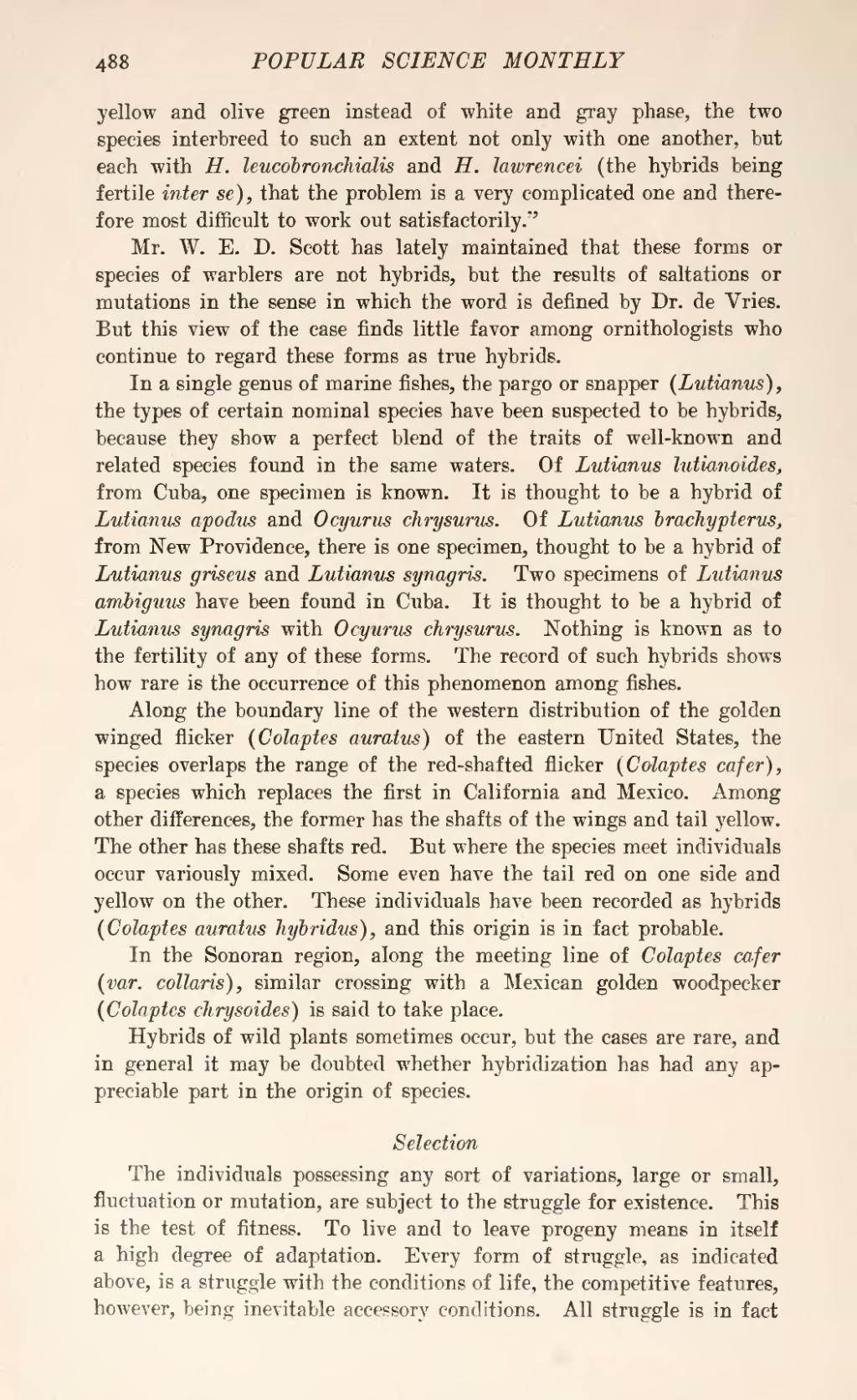yellow and olive green instead of white and gray phase, the two species interbreed to such an extent not only with one another, but each with H. leucobronchialis and H. lawrencei (the hybrids being fertile inter se), that the problem is a very complicated one and therefore most difficult to work out satisfactorily."
Mr. W. E. D. Scott has lately maintained that these forms or species of warblers are not hybrids, but the results of saltations or mutations in the sense in which the word is defined by Dr. de Vries. But this view of the case finds little favor among ornithologists who continue to regard these forms as true hybrids.
In a single genus of marine fishes, the pargo or snapper (Lutianus), the types of certain nominal species have been suspected to be hybrids, because they show a perfect blend of the traits of well-known and related species found in the same waters. Of Lutianus lutianoides, from Cuba, one specimen is known. It is thought to be a hybrid of Lutianus apodus and Ocyurus chrysurus. Of Lutianus brachypterus, from New Providence, there is one specimen, thought to be a hybrid of Lutianus griseus and Lutianus synagris. Two specimens of Lutianus ambiguus have been found in Cuba. It is thought to be a hybrid of Lutianus synagris with Ocyurus chrysurus. Nothing is known as to the fertility of any of these forms. The record of such hybrids shows how rare is the occurrence of this phenomenon among fishes.
Along the boundary line of the western distribution of the golden winged flicker (Colaptes auratus) of the eastern United States, the species overlaps the range of the red-shafted flicker (Colaptes cafer), a species which replaces the first in California and Mexico. Among other differences, the former has the shafts of the wings and tail yellow. The other has these shafts red. But where the species meet individuals occur variously mixed. Some even have the tail red on one side and yellow on the other. These individuals have been recorded as hybrids (Colaptes auratus hybridus), and this origin is in fact probable.
In the Sonoran region, along the meeting line of Colaptes cafer (var. collaris), similar crossing with a Mexican golden woodpecker (Colaptes chrysoides) is said to take place.
Hybrids of wild plants sometimes occur, but the cases are rare, and in general it may be doubted whether hybridization has had any appreciable part in the origin of species.
Selection
The individuals possessing any sort of variations, large or small, fluctuation or mutation, are subject to the struggle for existence. This is the test of fitness. To live and to leave progeny means in itself a high degree of adaptation. Every form of struggle, as indicated above, is a struggle with the conditions of life, the competitive features, however, being inevitable accessory conditions. All struggle is in fact

